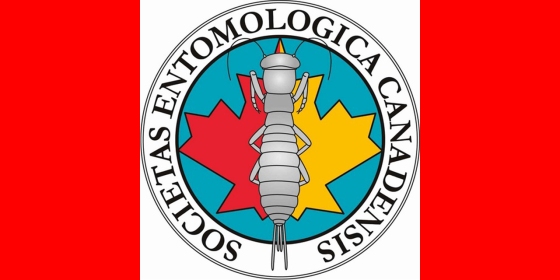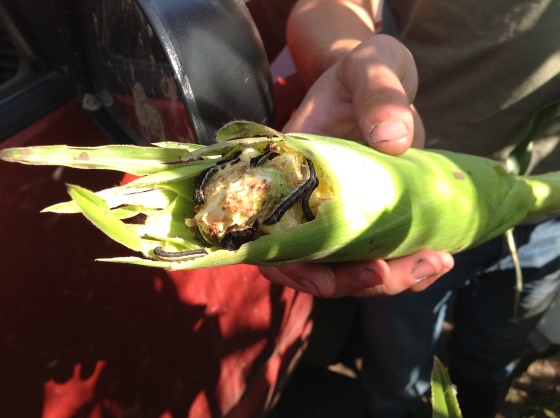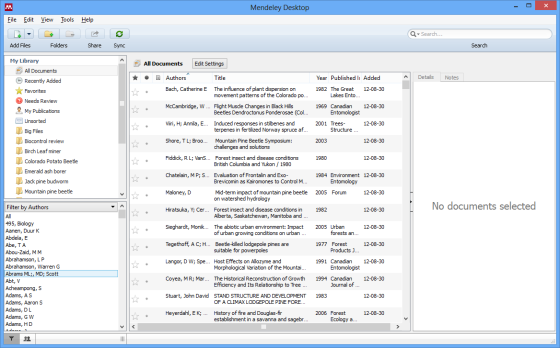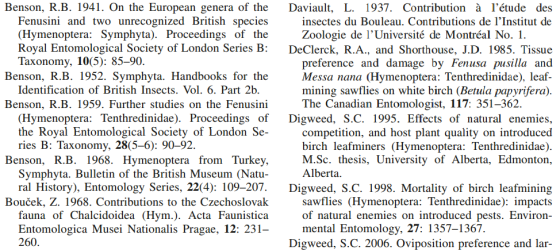By Dr. Laurel Haavik, US Forest Service
Exotic species that establish, spread, and cause substantial damage are demonized as foreign invaders that charge with menacing force across the landscape. Rightly so; those pests threaten to displace or eliminate native species and alter ecosystem functions. Chestnut blight, emerald ash borer, and hemlock woolly adelgid are all excellent examples. What about invaders that aren’t so destructive? Or, at least don’t seem to be at the moment? At what point do we stop monitoring a seemingly innocuous invasive species, especially one that has proved itself a serious pest elsewhere? To make this decision, it’s helpful to know how much the species has affected its new habitat, and whether this impact already has or is likely to change over time. That is exactly what we set out to do with the European woodwasp, Sirex noctilio, in Ontario.
Nearly a decade after the woodwasp was first found in a trap near the Finger Lakes in New York (and then a year later across Lake Ontario in Sandbanks Provincial Park), it still hadn’t killed pines in noticeable numbers, either in the US or Canada. Native to Europe and Asia, this woodwasp has been introduced to several countries in the Southern Hemisphere, where it has been a serious pest in forests planted with exotic pines. By contrast, in North America, it seems that only the weakest trees, those that are already stressed by something else, are killed by the woodwasp. Would forests with many weakened trees allow populations of the woodwasp to build up enough that they could then kill healthy trees in well-maintained forests? Could we find any evidence that this had already happened or would likely happen in the future?
Our goal was to measure the impact the woodwasp has had in Ontario, and whether that has changed over time, by closely examining the same trees in pine forests every year. First, we had to find sites where the woodwasp could be found, which wasn’t every pine forest, and where landowners would allow us to work. We were not interested in sites that were well-managed, because research had already confirmed that the woodwasp was not present in those forests. We used records of positive woodwasp captures from the Ontario Ministry of Natural Resources trap survey as a guide. We visited 50 potential sites, and eventually selected eight for close scrutiny in our long-term study. These sites were areas where there was likely to be intense competition among trees for resources, with plenty of stressed trees for the woodwasp.
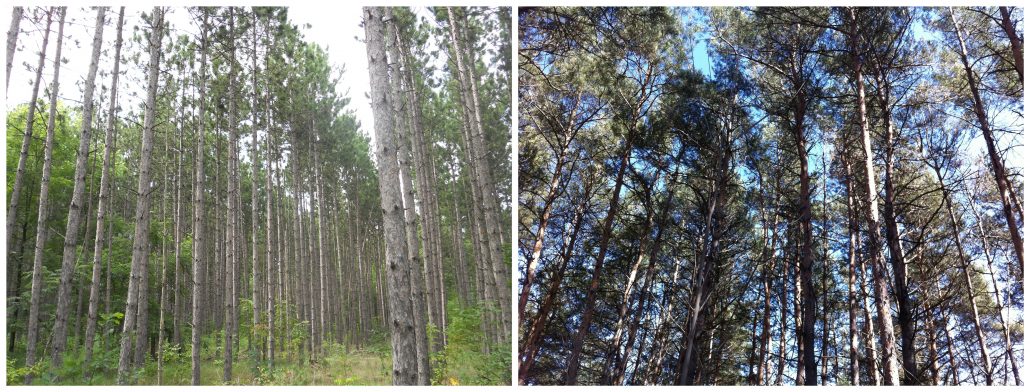
The European woodwasp was probably absent from a well-managed red pine forest (left), but likely to be found in an un-managed scots pine forest (right).
We visited all eight sites every fall from 2012 to 2016, after woodwasps had the opportunity to attack trees. Adult woodwasps mate and lay eggs, attacking trees in the process, in mid-summer. Attack was visible as distinctive resin beads scattered over the trunk. We recorded which trees had been attacked, and later (usually the following year) killed by the woodwasp.
 The woodwasp population was considerable at some of our sites, having killed about one-third of the trees within five years. Though at other sites, the population was much smaller, having killed only a small percentage of trees. We’re not exactly sure what caused this variability. It’s possible that the woodwasp arrived at some of our sites years before it arrived at others, and the most vulnerable trees were long dead at the sites it invaded earlier. We have no record of time since woodwasp invasion at any of our sites. It’s also possible that local environmental conditions, which we did not measure, could in some way have affected tree resistance or the woodwasp population.
The woodwasp population was considerable at some of our sites, having killed about one-third of the trees within five years. Though at other sites, the population was much smaller, having killed only a small percentage of trees. We’re not exactly sure what caused this variability. It’s possible that the woodwasp arrived at some of our sites years before it arrived at others, and the most vulnerable trees were long dead at the sites it invaded earlier. We have no record of time since woodwasp invasion at any of our sites. It’s also possible that local environmental conditions, which we did not measure, could in some way have affected tree resistance or the woodwasp population.
Most curious, though, was that over the five years many trees attacked by the woodwasp did not die – around 50 to 80%. At least half of these trees were attacked again and again in successive years. We had captured an interesting part of the woodwasp’s ecology, its way of essentially priming trees to become better habitat for its young. When laying eggs, female woodwasps also inject a self-made toxic venom along with a symbiotic fungus into the tree, to help kill it. If the tree is sufficiently resistant to attack, the female may not lay eggs, only the fungus and venom. The fungus and venom then work in concert to weaken (prime) the tree for re-attack – and hopefully successful colonization – in subsequent years.

Female woodwasps sometimes die while laying eggs. Survival of the fittest?
Two-thirds of trees that were attacked by the woodwasp at some point in our study (one or more times) did not die, which shows that most trees selected by the woodwasp as suitable habitat are at the moment resistant to its advances. This also shows, along with the variability in woodwasp impact among sites, that this invader is active in the forest. Should environmental conditions change (say, if a drought occurs), woodwasp populations could quickly rise to outbreak levels, which could kill large numbers of healthy pines. This has happened in other places.
Long-term study of these sites, and hopefully others, is needed so that we can be aware of changes that arise in woodwasp impact. This will allow us to be proactive about what steps to take to manage this invader, should it become a problem. It will also help us better understand and predict what causes exotic species to vacillate on the spectrum between aggressive invader and innocuous resident.
Want to read more? Check out the original article published in The Canadian Entomologist, which is freely available for reading & download until May 14, 2018.







 No, I don’t pop a wheelie on ice while wrangling bees in a forest, but I do work that is almost as interesting. I said *almost*.
No, I don’t pop a wheelie on ice while wrangling bees in a forest, but I do work that is almost as interesting. I said *almost*.
 To assess the risk, I first completed 3 tests as I trained on my bike. Like steps, each test relied on the one before to gather information on the risks.
To assess the risk, I first completed 3 tests as I trained on my bike. Like steps, each test relied on the one before to gather information on the risks.